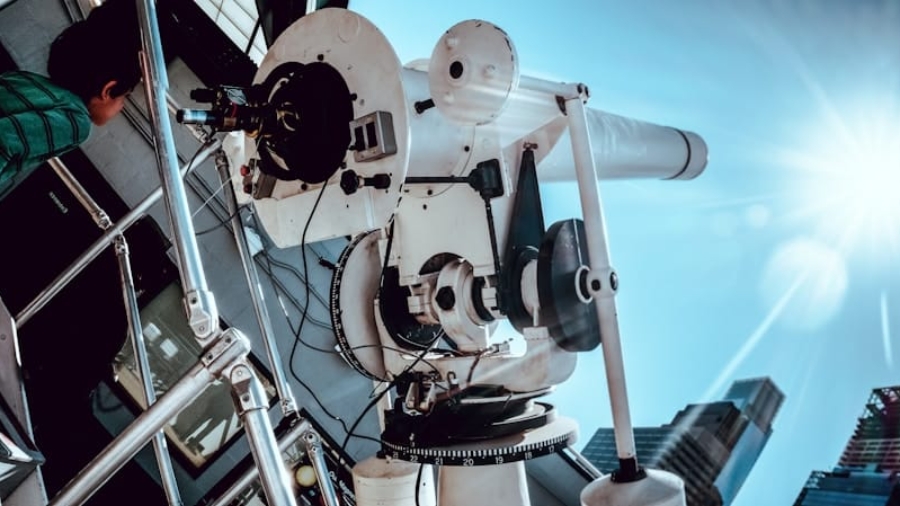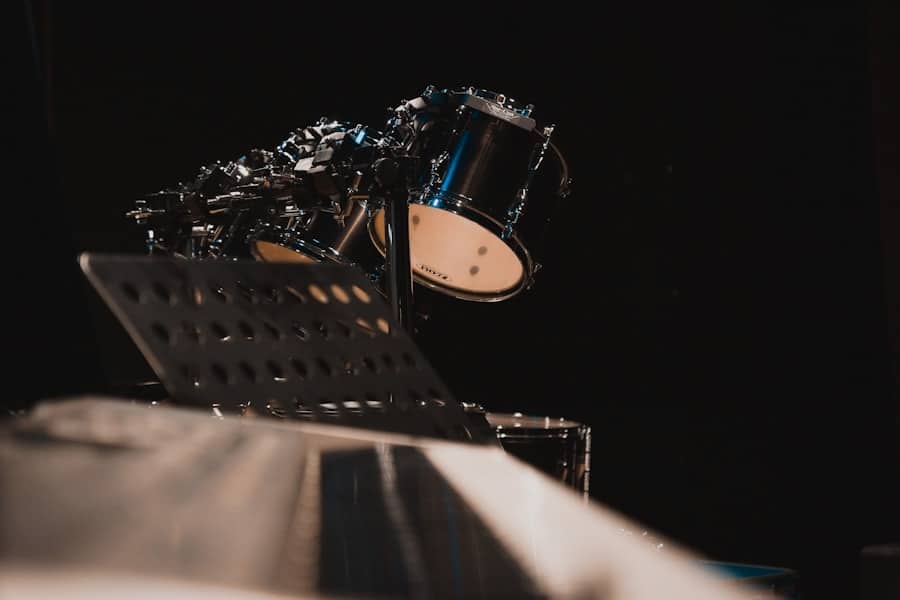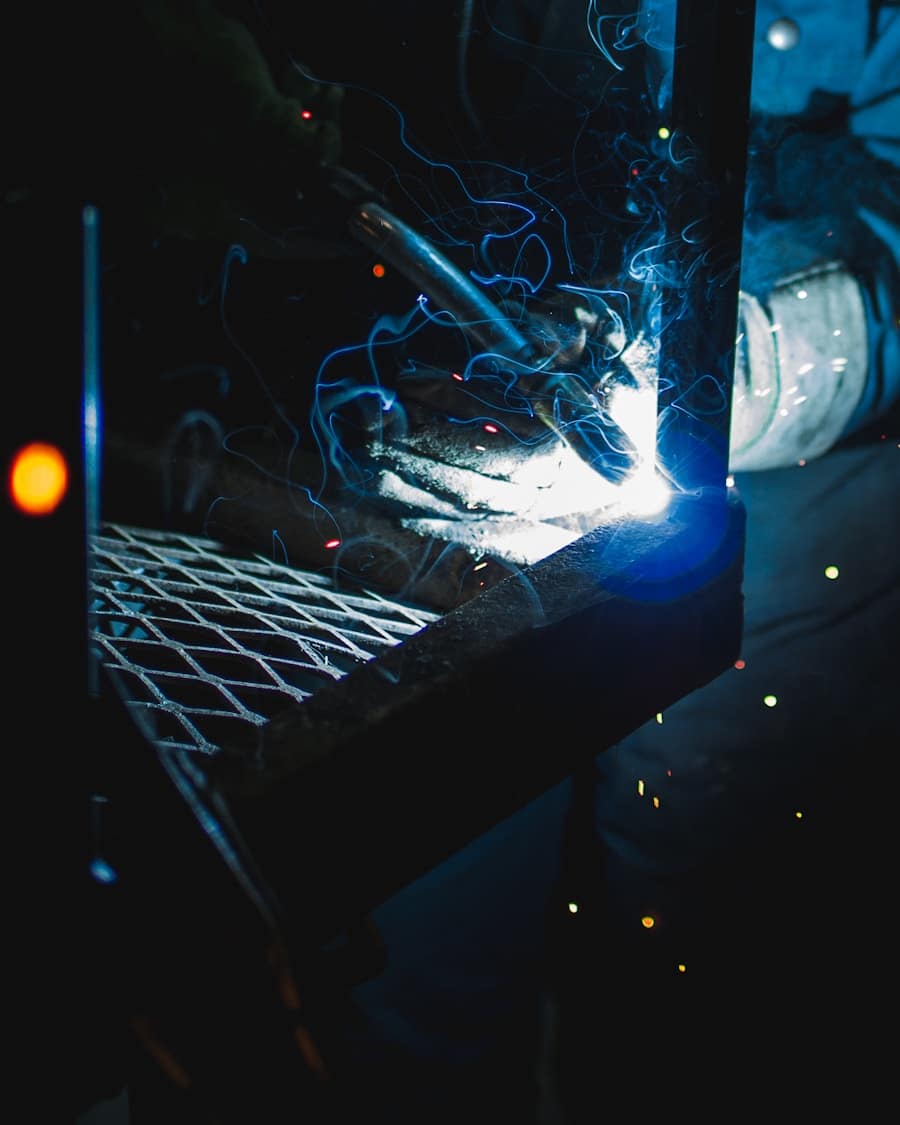Artificial Intelligence (AI) is poised to revolutionize space-based manufacturing by enhancing efficiency, precision, and adaptability in production processes. In the harsh and variable environment of space, where traditional manufacturing methods may falter, AI can provide the necessary intelligence to optimize operations. For instance, AI algorithms can analyze vast amounts of data from sensors and systems aboard spacecraft or space stations, enabling real-time decision-making that is crucial for maintaining production schedules and quality control.
This capability is particularly vital in scenarios where human intervention is limited due to distance or safety concerns. Moreover, AI can facilitate the design and creation of complex materials and components that are tailored for specific space missions. By employing machine learning techniques, AI can predict the performance of materials under various conditions, allowing engineers to innovate and refine designs before they are physically produced.
This predictive capability not only accelerates the development cycle but also reduces waste and resource consumption, which are critical factors in space missions where every ounce of material counts. The integration of AI into space-based manufacturing processes thus represents a significant leap forward in our ability to create sustainable and efficient production systems beyond Earth.
Key Takeaways
- AI plays a crucial role in space-based manufacturing by enabling autonomous decision-making and predictive maintenance.
- IoT has revolutionized automation in space-based manufacturing by providing real-time monitoring and control of equipment and processes.
- Robotics and automation have advanced space-based manufacturing by increasing efficiency and precision in tasks such as 3D printing and assembly.
- Implementing AI and IoT in space-based manufacturing presents challenges such as data security and interoperability, but also opportunities for innovation and cost reduction.
- Successful case studies demonstrate the potential of AI and IoT in space-based manufacturing, including autonomous assembly and predictive maintenance.
The Impact of IoT on Automation in Space-Based Manufacturing
The Internet of Things (IoT) plays a pivotal role in automating space-based manufacturing by connecting various devices and systems to facilitate seamless communication and data exchange. In a space environment, where equipment must operate autonomously for extended periods, IoT enables real-time monitoring and control of manufacturing processes. Sensors embedded in machinery can relay performance data back to central systems, allowing for immediate adjustments to be made based on operational conditions.
This level of automation not only enhances efficiency but also minimizes the risk of human error, which is particularly critical in the unforgiving context of space. Furthermore, IoT can significantly improve resource management in space-based manufacturing. By utilizing connected devices to track inventory levels, energy consumption, and material usage, manufacturers can optimize their operations to ensure that resources are used judiciously.
For example, if a particular material is running low, IoT systems can alert operators or even initiate automated reordering processes. This proactive approach to resource management is essential for long-duration missions where resupply opportunities are limited. The integration of IoT into space-based manufacturing thus creates a more responsive and resilient production environment.
Advancements in Robotics and Automation for Space-Based Manufacturing
Robotics has long been a cornerstone of space exploration, but recent advancements are pushing the boundaries of what is possible in space-based manufacturing. Modern robotic systems are becoming increasingly sophisticated, equipped with advanced sensors, AI-driven decision-making capabilities, and enhanced dexterity that allow them to perform complex tasks autonomously. For instance, robotic arms can now assemble intricate structures in microgravity environments with a level of precision that was previously unattainable.
These advancements not only streamline the manufacturing process but also reduce the need for human presence in potentially hazardous environments. In addition to assembly tasks, robotics is also being utilized for material handling and quality assurance in space-based manufacturing. Automated systems can transport materials between different production areas, ensuring that workflows remain uninterrupted.
The evolution of robotics in this context underscores the potential for automation to enhance both productivity and safety in space-based manufacturing operations.
Challenges and Opportunities in Implementing AI and IoT in Space-Based Manufacturing
While the integration of AI and IoT into space-based manufacturing presents numerous opportunities, it also comes with a set of challenges that must be addressed. One significant hurdle is the development of robust systems that can operate reliably in the extreme conditions of space. Factors such as radiation exposure, temperature fluctuations, and microgravity can adversely affect electronic components and sensors.
Therefore, ensuring the durability and resilience of AI and IoT systems is paramount for their successful deployment in space environments. Another challenge lies in the complexity of data management. The vast amounts of data generated by IoT devices necessitate sophisticated data processing capabilities to extract actionable insights.
This requirement can strain existing computational resources and necessitate advancements in data analytics techniques. However, overcoming these challenges also presents opportunities for innovation. For instance, developing new materials that can withstand harsh conditions could lead to breakthroughs not only in space manufacturing but also in terrestrial applications.
Additionally, as AI and IoT technologies continue to evolve, they may unlock new methodologies for optimizing production processes that were previously unimaginable.
Case Studies of Successful Applications of AI and IoT in Space-Based Manufacturing
Several pioneering projects have successfully demonstrated the application of AI and IoT in space-based manufacturing, showcasing their potential to transform this field. One notable example is NASA’s 3D Printing In Zero-G Technology Demonstration (3D Print) project aboard the International Space Station (ISS). This initiative utilized a 3D printer equipped with sensors and AI algorithms to produce tools and components on-demand.
By leveraging IoT connectivity, the system could monitor its performance and make adjustments as needed, significantly reducing the need for resupply missions from Earth. Another compelling case study is the European Space Agency’s (ESA) use of autonomous robots for construction tasks on the Moon and Mars. These robots are designed to work collaboratively with human operators while utilizing AI to navigate complex terrains and perform construction activities autonomously.
By integrating IoT technology, these robots can communicate with each other and share data about their surroundings, enhancing their operational efficiency. Such projects illustrate how AI and IoT can be harnessed to create self-sustaining manufacturing ecosystems beyond our planet.
The Future of Automation in Space-Based Manufacturing
Autonomous Facilities for Efficient Production
These facilities will utilize AI-driven systems to manage all aspects of production, from resource extraction to component assembly, minimizing human involvement and maximizing efficiency. This will enable the production of high-quality components and products in space, reducing reliance on Earth-based supply chains.
Advancements in Materials Science
Advances in materials science will also play a crucial role in shaping the future of space-based manufacturing. The development of new materials specifically designed for use in space environments will enable the production of components that are lighter, stronger, and more resilient than ever before. When combined with AI’s predictive capabilities, this could lead to innovations that enhance the performance of spacecraft and habitats designed for long-duration missions.
Redefining Space Exploration
As we look ahead, it becomes clear that automation will not only streamline production processes but also redefine our approach to exploration beyond Earth. With autonomous facilities and advanced materials, we can expect to see new opportunities for space-based manufacturing, enabling humanity to explore and settle the cosmos like never before.
Ethical and Regulatory Considerations for AI and IoT in Space-Based Manufacturing
As AI and IoT technologies become increasingly integrated into space-based manufacturing, ethical and regulatory considerations must be carefully examined. One primary concern revolves around data privacy and security. The vast amounts of data generated by IoT devices raise questions about who has access to this information and how it is used.
Ensuring that sensitive data is protected from unauthorized access or misuse is essential for maintaining trust among stakeholders involved in space missions. Moreover, there are ethical implications related to the autonomy of AI systems used in manufacturing processes. As these systems become more capable of making decisions without human intervention, it raises questions about accountability and responsibility in case of failures or accidents.
Establishing clear guidelines and regulations governing the use of AI in space-based manufacturing will be crucial to address these concerns while fostering innovation.
Collaboration and Partnerships in Advancing AI and IoT in Space-Based Manufacturing
The advancement of AI and IoT technologies in space-based manufacturing will heavily rely on collaboration among various stakeholders, including government agencies, private companies, research institutions, and international organizations. Partnerships between these entities can facilitate knowledge sharing, resource pooling, and joint research initiatives aimed at overcoming technical challenges associated with implementing these technologies. For instance, NASA’s collaborations with private aerospace companies have already yielded significant advancements in rocket technology and satellite deployment strategies.
By extending these partnerships into the realm of AI and IoT for manufacturing purposes, stakeholders can leverage each other’s expertise to accelerate innovation. Furthermore, international collaborations could lead to standardized practices that enhance interoperability among different systems used across various countries’ space programs. Such cooperative efforts will be essential for realizing the full potential of automation in space-based manufacturing as humanity ventures further into the cosmos.
In addition to the advancements in space-based manufacturing driven by AI and IoT, another important aspect of technology is the use of lighting design software. This article provides a comprehensive guide to the best lighting design software available in 2023, highlighting the importance of efficient and effective lighting in various industries. By utilizing the right software, manufacturers can optimize their production processes and enhance the overall quality of their products.
FAQs
What is AI and IoT in the context of space-based manufacturing?
AI, or artificial intelligence, refers to the simulation of human intelligence processes by machines, particularly computer systems. IoT, or the Internet of Things, refers to the network of physical devices, vehicles, and other items embedded with electronics, software, sensors, and network connectivity that enable them to collect and exchange data.
How are AI and IoT driving automation in space-based manufacturing?
AI and IoT are driving automation in space-based manufacturing by enabling machines and devices to communicate and make decisions without human intervention. This allows for more efficient and precise manufacturing processes in the unique environment of space.
What are the benefits of using AI and IoT in space-based manufacturing?
The benefits of using AI and IoT in space-based manufacturing include increased efficiency, reduced human error, improved safety, and the ability to operate in remote and harsh environments. These technologies also enable real-time monitoring and data analysis, leading to better decision-making and problem-solving.
What are some examples of AI and IoT applications in space-based manufacturing?
Examples of AI and IoT applications in space-based manufacturing include autonomous robotic assembly, predictive maintenance of equipment, remote monitoring of manufacturing processes, and the use of AI algorithms to optimize production schedules and resource allocation.
What are the challenges of implementing AI and IoT in space-based manufacturing?
Challenges of implementing AI and IoT in space-based manufacturing include the need for reliable communication networks, the development of AI algorithms that can operate in low-resource environments, and ensuring the security and privacy of data transmitted between devices. Additionally, there may be regulatory and ethical considerations to address.



